We are delighted to announce the publication of the Faraday Discussions volume on MOFs for energy and the environment which we hope will be of interest to you:
Take a look at the whole issue today:
In the volume you can find all the papers and exciting discussion from the conference held Online in June 2021.
Here are just some of the highlights:
Shi-Qiang Wang, Soumya Mukherjee and Michael J. Zaworotko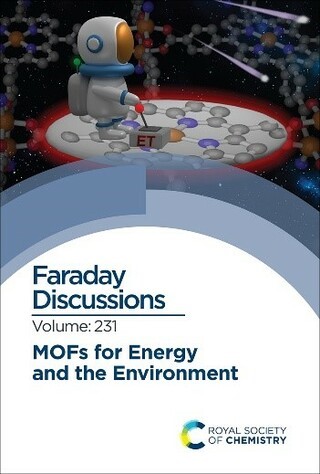
Faraday Discuss., 2021, 231, 9-50
Concluding remarks: current and next generation MOFs
Ming-Shui Yao, Ken-ichi Otake, Zi-Qian Xue and Susumu Kitagawa
Faraday Discuss., 2021, 231, 397-417
A high-throughput screening of metal–organic framework based membranes for biogas upgrading
Joseph Glover and Elena Besley
Faraday Discuss., 2021, 231, 235-257
Thermodynamic exploration of xenon/krypton separation based on a high-throughput screening
Emmanuel Ren and François-Xavier Coudert
Faraday Discuss., 2021, 231, 201-223
Monolithic metal–organic frameworks for carbon dioxide separation
David G. Madden, Robin Babu, Ceren Çamur, Nakul Rampal, Joaquin Silvestre-Albero, Teresa Curtin and David Fairen-Jimenez
Faraday Discuss., 2021, 231, 51-65
As well as the RSC Prize and Award talk: 2020 Sustainable Water Award:
‘Eye’ of the molecule—a viewpoint
Seungkyu Lee and Omar M. Yaghi
Faraday Discuss., 2021, 231, 145-149
Faraday Discussions are a unique opportunity to discuss your work with leading researchers in developing areas of chemistry and its interfaces with other scientific disciplines.
All delegates have the opportunity to present their views on the Discussion papers and their own new research. All the presented papers and the discussion are published together in the Faraday Discussions volume.
Don’t miss out – find out more about Faraday Discussions the journal and take a look at future Faraday Discussion meetings, including:
Mechanochemistry: Fundamentals, applications and future
12–14 September 2022, Cambridge, UK and Online
Oral abstract deadline: 10 January 2022
Sign up to our free content e-alert or follow us on Twitter to make sure you don’t miss out on our latest publications and upcoming events.
We hope you enjoy these articles and will join us at a future meeting.












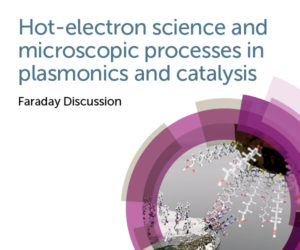 We are delighted to share with you a selection of the Accepted Manuscripts that will be discussed at the upcoming Faraday Discussions meeting on
We are delighted to share with you a selection of the Accepted Manuscripts that will be discussed at the upcoming Faraday Discussions meeting on 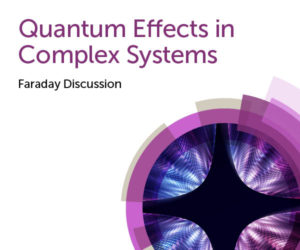
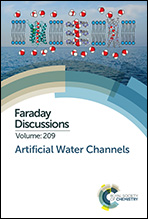 .
.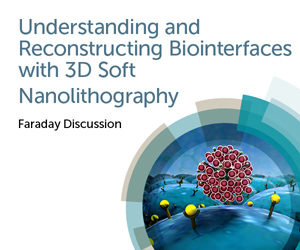 We’ll be discussing some of the latest developments in nanolithography of biointerfaces at our
We’ll be discussing some of the latest developments in nanolithography of biointerfaces at our 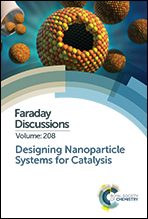 We are delighted to announce that the latest volume of Faraday Discussions on
We are delighted to announce that the latest volume of Faraday Discussions on 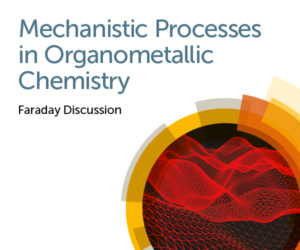
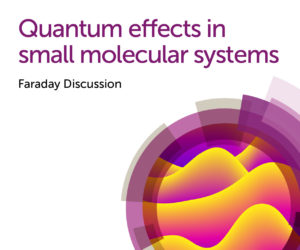

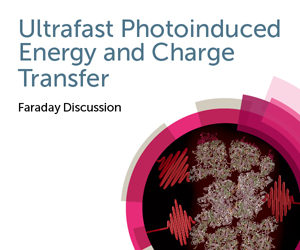
 We are delighted to share this collection of the most read articles from last year’s diverse range of Faraday Discussions. From fundamental studies to applied research, these articles showcase the breadth of topics being discussed by world renowned researchers, with many available
We are delighted to share this collection of the most read articles from last year’s diverse range of Faraday Discussions. From fundamental studies to applied research, these articles showcase the breadth of topics being discussed by world renowned researchers, with many available